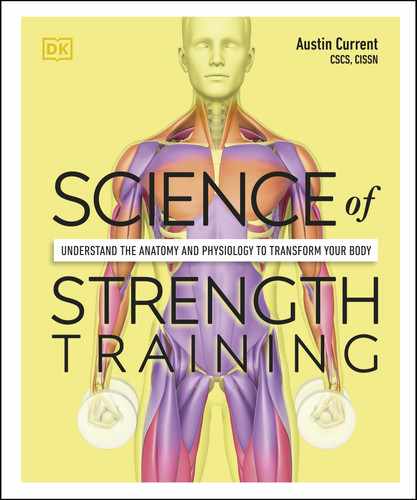neutral-grip horizontal row
Horizontal pulling fits well into any strength training program; this neutral-grip variation trains a large portion of the upper back, lats, and biceps. Finding the correct position on the bench—not too close to the apparatus—is key to ensuring you are working with a full range of motion.
the big picture
Place your feet low down on the foot platform to allow for more flexibility at the hip. If you experience any shoulder discomfort, try adjusting your range of motion in stage 2.
Beginners can start with 4 sets of 8–10 reps; discover other variations to practice and other targeted sets in the training programs.
PREPARATORY STAGE
Set the weights and adjust the seat height, then sit on the bench, facing the machine; your feet should be low down on the platform and your legs softly bent. Hold the attachment with your hands shoulder-width apart and sit back, arms extended and back upright.

n Double-tap image to read the labels
stage one
Breathe in and engage your abs. As you exhale, flex your elbows and contract your upper/mid back muscles to row the attachment toward your upper abdomen; your elbows will be driven back. Stop just before your shoulders start to round forward.

n Double-tap image to read the labels
POSTERIOR-LATERAL VIEW
Upper body and arms
This row trains the latissimus dorsi alongside the biceps in their role of elbow flexion. Muscles of the upper back, such as the teres major, rhomboids, and trapezius, alongside the rear deltoids help as secondary movers. Control the eccentric action (stage 2) by maintaining tension on the muscles of your back rather than letting your biceps take over.
Legs
The muscles of the lower body help provide your base of support during this move. In this row, stability comes from your feet being in contact with the foot platform, allowing more tension to be placed on the target muscles. If needed, place a weight plate under each foot to maintain contact with the ground throughout the exercise.
stage two
With your abs engaged, breathe in as you return the bar to the starting position, resisting the load with control; keep tension in your back and biceps throughout. Reset your breathing and repeat stages 1 and 2. To increase the challenge, pause for 1 second either here or after stage 1.

n Double-tap image to read the labels
![]() Common mistakes
Common mistakes
Many people make the mistake of generating momentum at the hip and torso, which will cause you to lean back rather than rowing back. Aim to keep your core in a fixed position throughout.
